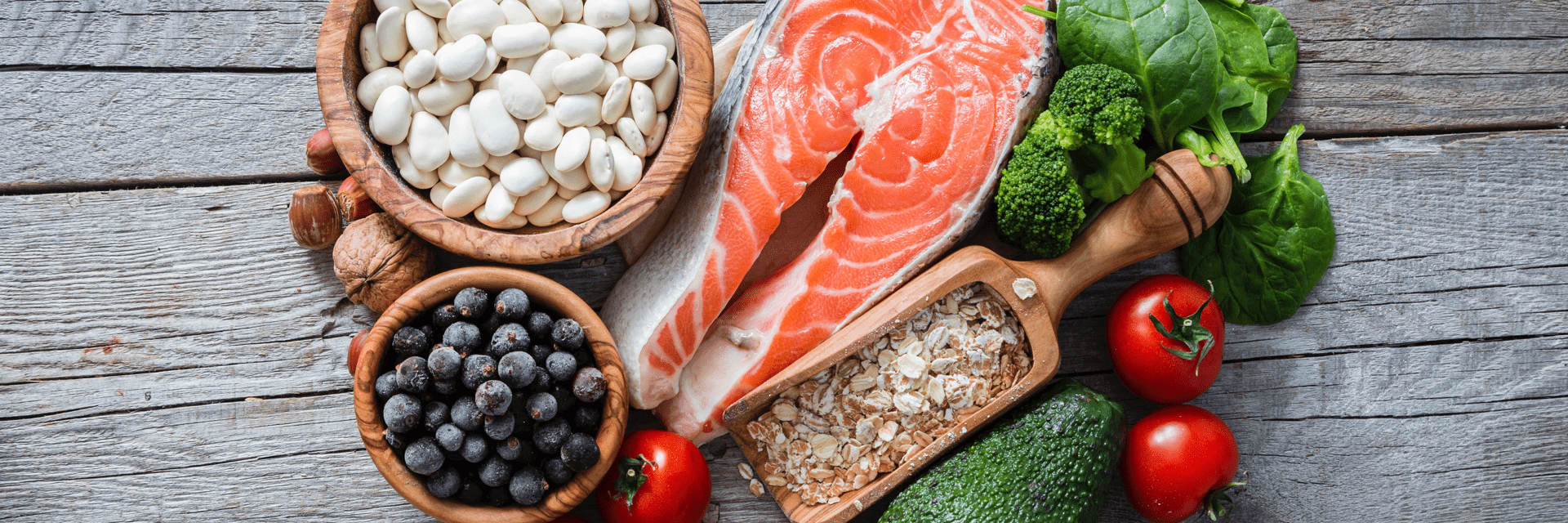There are two main types of foods that reduce cholesterol actively (rather than as part of a swap, like unsaturated fats) and are clinically proven: plant sterols*and beta-glucans**. So, what are these cholesterol reducing foods, and how do they work?
Plant sterols
What are plant sterols?
Plant sterols are a natural substance found in very small amounts in fruits, vegetables, nuts, seeds, legumes, cereals and vegetable oils. They’re clinically proven to lower cholesterol when enjoyed as part of a balanced diet*, but it’s not possible to get enough plant sterols from eating these foods to get the recommended amount, which is between 1.5 and 2.4g of plant sterols a day. So many people choose to eat food and drinks that contain added plant sterols – more on that below.
How do plant sterols work?
In a way, the plant sterols in foods that help lower cholesterol work by playing a kind of copycat. They’re structurally similar to cholesterol, which means that they can compete for (and partially block) absorption by the body’s gut. So less cholesterol makes its way into the bloodstream, lowering blood cholesterol levels.
What foods contain plant sterols?
The ProActiv range contains added plant sterols, and includes spreads, mini drinks, and a skimmed milk drink. You can browse the range here. To get the recommended amount of plant sterols a day, try:
- 3 servings of ProActiv spread (2 teaspoons a serving) or skimmed milk drink (250mls a serving), mixing and matching as you like.
Beta glucans
What are beta glucans?
According to the British charity Heart UK, beta-glucans are soluble fibers found in cereals like oats. A daily intake of 3g of oat beta-glucans is necessary for a cholesterol-reducing effect**.
How do beta glucans work?
In the digestive tract, oat beta-glucans thicken and gel together. This helps to reduce the amount of cholesterol in the blood by affecting the absorption of dietary cholesterol.
What foods contain beta glucans?
Plenty of products contain oats, but to count as a source of beta glucans, a food is required to have at least 0.75g of them in a standard portion. To get all three grams of oat beta glucan, spread out your portions over the course of the day.
Now you know about beta glucans and plant sterols, you’re probably wondering how you can enjoy them both in your meals. Here’s some inspiration:
Porridge
Beta glucans: An old-fashioned bowl of oat porridge in the morning is a simple way to get a portion of beta glucans.
Plant sterols: To get some plant sterols in your meal as well, make your porridge with water, and then stir in 250 mls of ProActiv skimmed milk drink once it’s cooked*.
Honey oat smoothie
Beta glucans: Add a little extra comfort to your smoothie by adding a tablespoon or two of oats into your fruity blend. Banana and fresh berries work well – add honey to taste.
Plant sterols: Make with a ProActiv mini drink, or 250 mls of our skimmed milk drink*.
Hearty soups
Beta glucan: Rich soups and stews (particularly tomato-based ones) are ultra-comforting once you stir in a handful of oats.
Plant sterols: Serve with wholegrain bread topped with ProActiv spread*.
How have others used foods to help lower cholesterol?
Sometimes it’s difficult to get started on something new. Try the ProActiv free; Starter Kit for help and advice on lowering cholesterol. You’re not alone, either! Feel free to browse our success stories and find out how others have enjoyed our range of foods for lowering cholesterol – and the results, too.
**Beta-glucans have been shown to lower blood cholesterol. High cholesterol is a risk factor in the development of coronary heart disease. A daily intake of 3g of oat or barley beta-glucans is necessary for a cholesterol-reducing effect.
